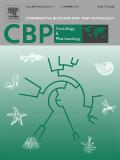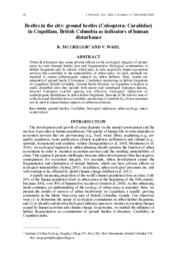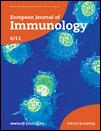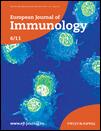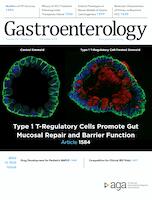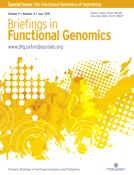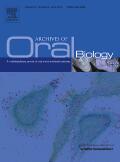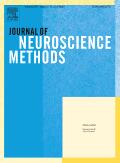Biology
Related Works
Content type
Digital Document
Abstract
The neuroprotective effects of inducing the blood-brain barrier ATP-binding cassette protein transporter P-glycoprotein (P-gp) with clotrimazole (CTZ) in both fed and fasted zebrafish (Danio rerio) against the CNS-toxicant ivermectin (IVM, 22,23-dihydro avermectin B1a + 22,23-dihydro avermectin B1b) were examined. Zebrafish were administered 2 μmol/kg IVM intraperitoneally, and various behavioural assays (swimming performance, exploratory behaviour, olfactory responses, motor coordination, and escape responses) were used to measure neurological dysfunction. IVM administration alone caused a decrease in mean swim speed (91 % of controls), maximal speed (71 %), passage rate (81 %), 90° turns (81 %), and response to food stimulus (39 %). IVM exposure also increased the percent time that fish spent immobile (45 % increase over controls) and the percent of lethargic fish (40 % increase). Fish administered 30 μmol/kg of the P-gp inducer CTZ intraperitoneally 3 d prior to IVM exposure exhibited a change in only the % time spent immobile. These data indicate that P-gp induction may be limited in protecting the zebrafish CNS from IVM over baseline. Fasted fish did not differ from fed fish in the effects of IVM on behaviour, and no differences were seen following P-gp induction with CTZ. These results suggest that this chemical defence system is not downregulated when fish are challenged with limited energy availability.
Origin Information
Content type
Digital Document
Abstract
1. Using the two electrode voltage clamp configuration, a high voltage activated whole-cell Ca2+ channel current (IBa) was recorded from a cluster of neurosecretory ‘Light Yellow’ Cells (LYC) in the right parietal ganglion of the pond snail Lymnaea stagnalis.
2. Recordings of IBa from LYCs show a reversible concentration-dependent depression of current amplitude in the presence of the volatile anaesthetics halothane, isoflurane and sevoflurane, or the non-volatile anaesthetic pentobarbitone at clinical concentrations.
3. In the presence of the anaesthetics investigated, IBa measured at the end of the depolarizing test pulse showed proportionally greater depression than that at measured peak amplitude, as well as significant decrease in the rate of activation or increase in inactivation or both.
4. Within the range of concentrations used, the concentration-response plots for all the anaesthetics investigated correlate strongly to straight line functions, with linear regression R2 values > 0.99 in all instances.
5. For volatile anaesthetics, the dose-response regression slopes for IBa increase in magnitude, in order of gradient: sevoflurane, isoflurane and halothane, a sequence which reflects their order of clinical potency in terms of MAC value."
Origin Information
Content type
Digital Document
Abstract
A rapid system of sampling for strawberry aphids, Chaetosiphon fragaefolii (Cockerell) was developed for use by pest management scouts. Regression equations relating mean numbers of aphids/leaf, variances of those means and the proportion of unifested leaves (Po) were developed from samples of aphids from single leaves. Using the equations, mean aphid density per leaf and standard errors can be estimated from Po and the sample size. The accuracy of the estimations were tested on data from 155 samples from commercial strawberry fields sampled by a professional pest management company. Means estimated from Po were sufficiently accurate for the intended purpose and only 2 hours were required to sample 300 leaves compared to 16 hours when all aphids on all leaves were counted from only 80 leaves. An electronic recorder was programmed to prompt an IPM scout for data entry, allow correction of errors and permit sampling from different subplots within a field.
Origin Information
Content type
Digital Document
Abstract
Urban development may cause adverse effects on the ecological integrity of natural areas in cities through habitat loss and fragmentation. Biological communities in habitat fragments may be altered, which may, in turn, negatively impact ecosystem services that contribute to the sustainability of urban areas. As such, methods are required to assess anthropogenic impacts on urban habitats. Here, results are presented of ground beetle (Coleoptera: Carabidae) monitoring in habitat fragments in Coquitlam, British Columbia. Ground beetle diversity in Coquitlam is highest in small, disturbed sites that include both native and introduced European species. Several European carabid species are effective biological indicators of anthropogenic disturbance in urban habitat fragments. Because of the relative ease of collection and identification of carabids, monitoring of carabids by citizen scientists can be used to assess human impacts on urban ecosystems.
Origin Information
Content type
Digital Document
Abstract
Alternatively activated macrophages are critical in host defense against parasites and are protective in inflammatory bowel disease, but contribute to pathology in asthma and solid tumors. The mechanisms underlying alternative activation of macrophages are only partially understood and little is known about their amenability to manipulation in pathophysiological conditions. Herein, we demonstrate that Src homology 2-domain-containing inositol-5'-phosphatase (SHIP)-deficient murine macrophages are more sensitive to IL-4-mediated skewing to an alternatively activated phenotype. Moreover, SHIP levels are decreased in macrophages treated with IL-4 and in murine GM-CSF-derived and tumor-associated macrophages. Loss of SHIP and induction of alternatively activated macrophage markers, Ym1 and arginase I (argI), were dependent on phosphatidylinositol 3-kinase (PI3K) activity and argI induction was dependent on the class IA PI3Kp110δ isoform. STAT6 was required to reduce SHIP protein levels, but reduced SHIP levels did not increase STAT6 phosphorylation. STAT6 transcription was inhibited by PI3K inhibitors and enhanced when SHIP was reduced using siRNA. Importantly, reducing SHIP levels enhanced, whereas SHIP overexpression or blocking SHIP degradation reduced, IL-4-induced argI activity. These findings identify SHIP and the PI3K pathway as critical regulators of alternative macrophage activation and SHIP as a target for manipulation in diseases where macrophage phenotype contributes to pathology.
Origin Information
Content type
Digital Document
Abstract
Alternatively activated or M2 macrophages have been reported to protect mice from intestinal inflammation, but the mechanism of protection has not been elucidated. In this study, we demonstrate that mice deficient in the p110δ catalytic subunit activity of class I phosphatidylinositol 3-kinase (PI3Kp110δ) have increased clinical disease activity and histological damage during dextran sodium sulfate (DSS) induced colitis. Increased disease severity in PI3Kp110δ-deficient mice is dependent on professional phagocytes and correlates with reduced numbers of arginase I+ M2 macrophages in the colon and increased production of inflammatory nitric oxide. We further demonstrate that PI3Kp110δ-deficient macrophages are defective in their ability to induce arginase I when skewed to an M2 phenotype with IL-4. Importantly, adoptive transfer of IL-4-treated macrophages derived from WT mice, but not those from PI3Kp110δ-deficient mice, protects mice during DSS-induced colitis. Moreover, M2 macrophages mediated protection is lost when mice are cotreated with inhibitors that block arginase activity or during adoptive transfer of arginase I deficient M2 macrophages. Taken together, our data demonstrate that arginase I activity is required for M2 macrophages mediated protection during DSS-induced colitis in PI3Kp110δ-deficient mice.
Origin Information
Content type
Digital Document
Abstract
Background & Aims
Crohn’s disease (CD) is associated with a dysregulated immune response to commensal micro-organisms in the intestine. Mice deficient in inositol polyphosphate 5′-phosphatase D (INPP5D, also known as SHIP) develop intestinal inflammation resembling that of patients with CD. SHIP is a negative regulator of PI3Kp110α activity. We investigated mechanisms of intestinal inflammation in Inpp5d−/− mice (SHIP-null mice), and SHIP levels and activity in intestinal tissues of subjects with CD.
<p>Methods
We collected intestines from SHIP-null mice, as well as Inpp5d+/+ mice (controls), and measured levels of cytokines of the interleukin 1 (IL1) family (IL1α, IL1β, IL1ra, and IL6) by enzyme-linked immunosorbent assay. Macrophages were isolated from lamina propria cells of mice, IL1β production was measured, and mechanisms of increased IL1β production were investigated. Macrophages were incubated with pan−phosphatidylinositol 3-kinase inhibitors or PI3Kp110α-specific inhibitors. Some mice were given an antagonist of the IL1 receptor; macrophages were depleted from ilea of mice using clodronate-containing liposomes. We obtained ileal biopsies from sites of inflammation and peripheral blood mononuclear cells (PBMCs) from treatment-naïve subjects with CD or without CD (controls), and measured SHIP levels and activity. PBMCs were incubated with lipopolysaccharide and adenosine triphosphate, and levels of IL1β production were measured.
<p>Results
Inflamed intestinal tissues and intestinal macrophages from SHIP-null mice produced higher levels of IL1B and IL18 than intestinal tissues from control mice. We found PI3Kp110α to be required for macrophage transcription of Il1b. Macrophage depletion or injection of an IL1 receptor antagonist reduced ileal inflammation in SHIP-null mice. Inflamed ileal tissues and PBMCs from patients with CD had lower levels of SHIP protein than controls (P < .0001 and P < .0002, respectively). There was an inverse correlation between levels of SHIP activity in PBMCs and induction of IL1β production by lipopolysaccharide and adenosine triphosphate (R2 = .88).
<p>Conclusions
Macrophages from SHIP-deficient mice have increased PI3Kp110α-mediated transcription of Il1b, which contributes to spontaneous ileal inflammation. SHIP levels and activity are lower in intestinal tissues and peripheral blood samples from patients with CD than controls. There is an inverse correlation between SHIP activity and induction of IL1β production by lipopolysaccharide and adenosine triphosphate in PBMCs. Strategies to reduce IL1B might be developed to treat patients with CD found to have low SHIP activity.
Origin Information
Content type
Digital Document
Abstract
The development of gene targeting approaches has had a tremendous impact on the functional analysis of the mouse genome. A specific application of this technique has been the adaptation of the bacteriophage P1 Cre/loxP site-specific recombinase system which allows for the precise recombination between two loxP sites, resulting in deletion or inversion of the intervening sequences. Because of the efficiency of this system, it can be applied to conditional deletions of relatively short coding sequences or regulatory elements but also to more extensive chromosomal rearrangement strategies. Both mechanistic and functional studies of genomic imprinting have benefited from the development of the Cre/loxP technology. Since imprinted genes within large chromosomal regions are regulated by the action of cis-acting sequences known as imprinting centers, chromosomal engineering approaches are particularly well suited to the elucidation of long-range mechanisms controlling the imprinting of autosomal genes. Here we review the applications of the Cre/loxP technology to the study of genomic imprinting, highlight important insights gained from these studies and discuss future directions in the field. [ABSTRACT FROM AUTHOR]
Origin Information
Content type
Digital Document
Abstract
Type IIB fast fibres are typically demonstrated in human skeletal muscle by histochemical staining for the ATPase activity of myosin heavy-chain (MyHC) isoforms. However, the monoclonal antibody specific for the mammalian IIB isoform does not detect MyHC IIB protein in man and MyHC IIX RNA is found in histochemically identified IIB fibres, suggesting that the IIB protein isoform may not be present in man; if this is not so, jaw-closing muscles, which express a diversity of isoforms, are likely candidates for their presence. ATPase histochemistry, immunohistochemistry polyacrylamide gel electrophoresis and in situ hybridization, which included a MyHC IIB-specific mRNA riboprobe, were used to compare the composition and RNA expression of MyHC isoforms in a human jaw-closing muscle, the masseter, an upper limb muscle, the triceps, an abdominal muscle, the external oblique, and a lower limb muscle, the gastrocnemius. The external oblique contained a mixture of histochemically defined type I, IIA and IIB fibres distributed in a mosaic pattern, while the triceps and gastrocnemius contained only type I and IIA fibres. Typical of limb muscle fibres, the MyHC I-specific mRNA probes hybridized with histochemically defined type I fibres, the IIA-specific probes with type IIA fibres and the IIX-specific probes with type IIB fibres. The MyHC IIB mRNA probe hybridized only with a few histochemically defined type I fibres in the sample from the external oblique; in addition to this IIB message, these fibres also expressed RNAs for MyHC I, IIA and IIX. MyHC IIB RNA was abundantly expressed in histochemical and immunohistochemical type IIA fibres of the masseter, together with transcripts for IIA and in some cases IIX. No MyHC IIB protein was detected in fibres and extracts of either the external oblique or masseter by immunohistochemistry, immunoblotting and electrophoresis. Thus, IIB RNA, but not protein, was found in the fibres of two different human skeletal muscles. It is believed this is the first report of the substantial expression of IIB mRNA in man as demonstrated in a subset of masseter fibres, but rarely in limb muscle, and in only a few fibres of the external oblique. These findings provide further evidence for the complexity of myosin gene expression, especially in jaw-closing muscles.
Origin Information
Content type
Digital Document
Abstract
We report a single step, simple, repeatable, rapid and reliable technique for simultaneous immunocytochemical staining with two or more rabbit polyclonal antibodies. This technique, which we have dubbed the ‘Pretty Poly’ method, is based on conjugating the antibodies with commercially available, fluorophore-tagged Staphylococcal protein-A (SP-A). Staining is illustrated at the calyx type presynaptic nerve terminal of the chick ciliary ganglion with antibodies directed against three nerve terminal proteins: neurofilaments of the axonal cytoskeleton, and two secretory vesicle proteins, SV2 and cysteine string protein (CSP). Images were deblurred with an iterative deconvolution protocol. Staining with a single polyclonal antibody was bright and had a resolution approaching light microscope limit. Treatment with two different polyclonal antibodies conjugated with contrasting dye-tagged protein-A resulted in double staining without significant crossover that was fully equivalent to the standard primary/secondary technique. The same single step protocol was used to stain with all three rabbit polyclonal antibodies or to combine the technique with a standard monoclonal primary/secondary antibody stain. Thus, the Pretty Poly protocol is a highly flexible, simple and yet effective staining technique that essentially solves the problem of co-staining with multiple polyclonal rabbit antibodies.
Origin Information

